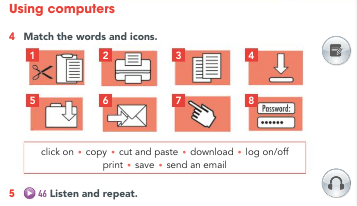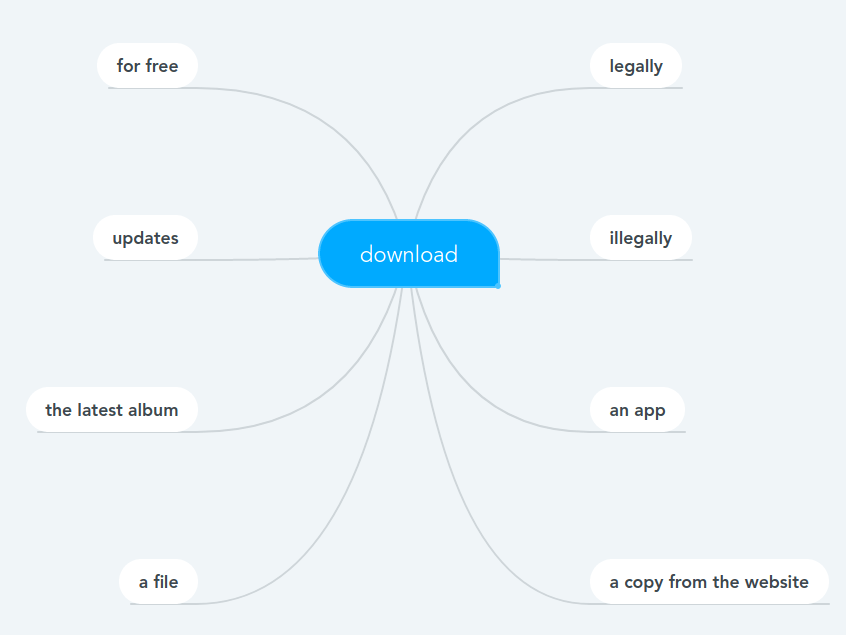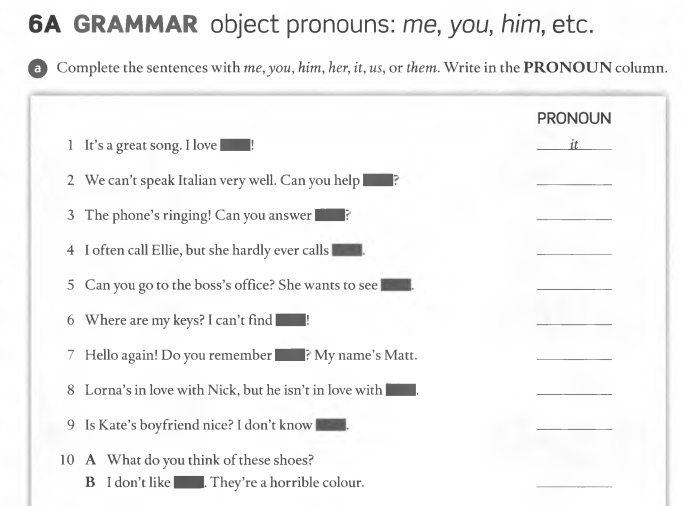Lexical approach has been all the rage recently. We keep hearing that it is better to teach collocations than isolated words, and that grammar can be taught lexically as well. Collocations, lexical chunks and fixed expressions are considered to be of primary importance for fluent speaking and profound knowledge.
There are some coursebooks which have been designed with a lexical approach in mind. Among them you will find well-known ‘Outcomes’ or ‘Innovations’ by H. Dellar and A. Walkley. They deal with tons of natural chunks and useful collocations and can contribute to your students’ fluency. However, we work with different textbooks. Some of them still give us wordlists or invite us to match isolated words to the pictures. How to make these textbooks more lexically friendly? Let’s try to find out in today’s article.
Working with words
Some coursebooks either give isolated words or minimal collocations like ‘cook breakfast’. They can have vocabulary pages filled with words or start each unit with a bit of new lexis.

If you want to provide your students with extra collocations or chunks, ask students to come up with ideas themselves, e.g. What are three things you can download? How can you do that? What can you click on? You can give them some thinking time after new vocabulary has been taught. They can think of the collocations individually or in pairs. After you’ve elicited some ideas, draw mindmaps on the board and/or ask students to write something down.

Alternatively, you can play ‘odd one out’. Give students 4 collocations with each word and ask to choose the one which doesn’t look good. These activities help learners to notice collocations and memorize things better.
Working with texts
Lots of coursebook creators have their own ideas about words worth learning. Every time you approach a reading text, you will find out that some words have been underlined or highlighted for you.

It is really good if your students remember the word ‘busy’, but how about ‘busy with orders’ or at least ‘busy with’? I asked my Elementary student to work with this text at home and find some word combinations she finds useful. Here is what I got:
children aged 16, 12 and 9
check my emails
plan the menu
the radio is on
busy with orders
arrive at the same time
in about an hour
don’t have time to relax
Surprisingly enough, all of these collocations and chunks were more or less relatable to her life of a working mother of two. After noticing them herself, the lady started using them in her speech quite often.
Here are some ideas on how to work with reading:
- Invite students to find collocations in the text themselves. Sometimes they only pay attention to new words but ignore nice collocations which they understand but are unable to use yet.
- Write a short list of words on the board and ask students to find the phrases with these words in the text. This will give them an idea of what exactly to look for, but they will still do their part of job.
- Highlight more collocations yourself. It works with lower levels or when you are just starting to teach new students.
- Remove some words from the text. Now when lots of us work online it is very easy to do. Share the text with removed words and let students think what might go there. This activity works well with the Use of English section of exam tasks. Before students read a gapped text and choose an option out of 4 given, let them think about possible words without looking at the options.

All the ideas mentioned above may be used with listening scripts as well or as part of the pre-listening stage if you want to support students with some chunks or collocations in advance.
Working with grammar
In one of the previous articles we’ve taken a look at teaching grammar lexically to teens. Most grammar exercises from coursebooks focus on single sentences which drill the same structure. However, in real life we don’t usually end up with a conversation like:
-Have you ever eaten Indian food?
-No, I haven’t.
When we talk, we usually add comments, react to other people’s words, or explain what we mean. Why don’t you develop a two-line dialogue a bit?
-Have you ever eaten Indian food?
-No, but I’d love to.
-Yes, a couple of times.
-Yes, too hot for my liking.
-No, not my thing.
This way you can construct some meaningful dialogues and teach extra vocab your students might find useful. Their speech will sound more natural and, what’s more, there are dozens of situations when something like ‘not my thing’ can come in handy.
So, when you have an exercise like this gap-fill, included in the textbook, invite your students to think of a situation and continue the sentences in pairs.

Then, saving their ideas, upgrade the language and offer a couple of collocations. Of course, it’s impossible to work with every sentence like that, but you can ask them to vote for 3 most interesting once, for instance.

The benefits of making your textbook more lexically friendly are obvious. First, working with lexis in such a way will expand your students’ vocabulary and contribute to their fluency. Second, ‘little’ things like articles and prepositions might come naturally making the ideas easier to follow. Third, students will not be limited by ‘complex grammar’ which we try to avoid till they have passed a certain level.
Do you practise a lexical approach? What’s your take on that?






 Маргарита Аветисян
Маргарита Аветисян 
 Вероника Аветисян
Вероника Аветисян 


